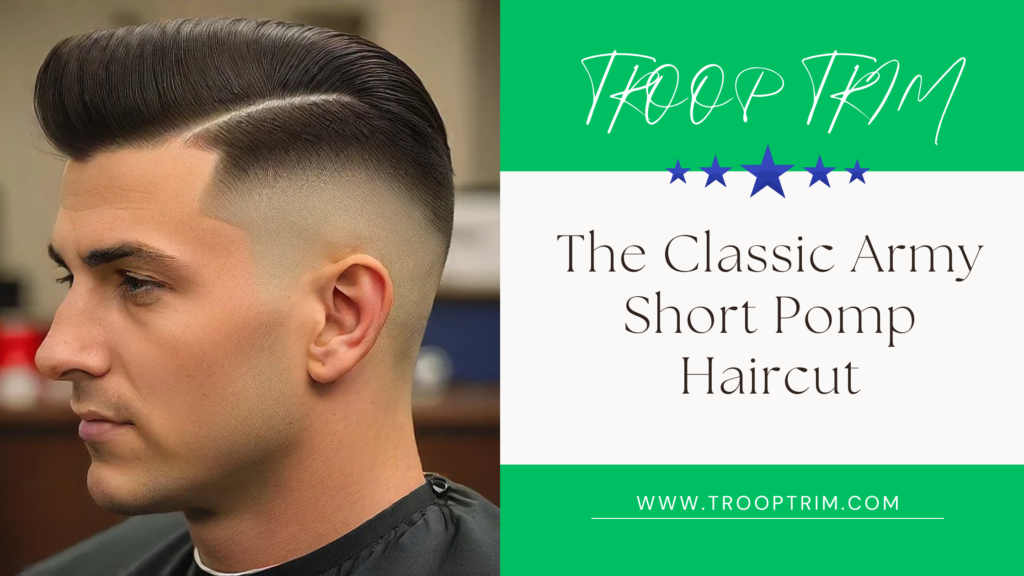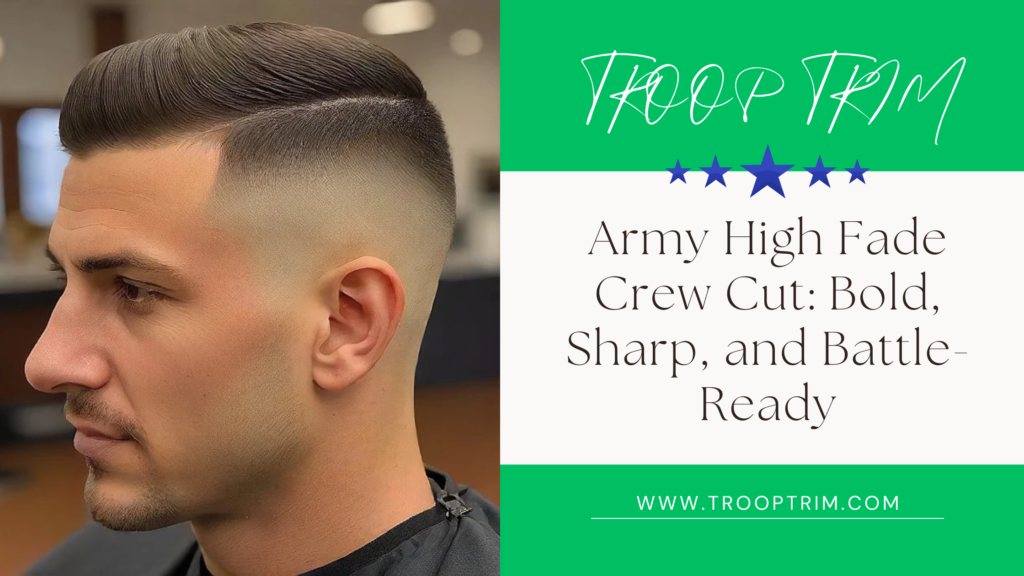Table of Contents
Introduction
The military buzz cut has a duration of dozens of years and remains one of the most charismatic hairstyles for men. More concretely, the Army buzz cut is quite relevant and has even more storied roots. Soldiers with this ultra-short hairstyle get a neat, simple, and low-maintenance hairstyle, which suits their busy lifestyle.
The New Army Buzz Cut of the US Army
The Army buzz haircut is a haircut that leaves the hair very short, normally shaved with an electric clipper. This makes hair grow to an equal short length all over the head to be very neat and very different. An Army buzz cut in contrast to a completely shaved head is given a tiny two-millimeter buzz on the top of the head.
This very severe short style helps to keep hair firmly in place when wearing units such as combat helmets and out of vision. The buzz cut of the hair also ensures that protective gas masks fit properly and can provide the essential protection necessary. Indeed, with such close cropping, one only needs bar soap and water to wash the hair of a man. In the Army, this traditional look of military men maintains the usability and obedience of servicemen.
How the Classic Buzz Cut is Conducted?
Getting this super-short all-over hairstyle can only be done using electric clippers. First of all, hair must be combed and coated with water so that the clippers run evenly without catching the hair on the scalp. Starting from where natural bottom hairline from the neck, the clippers are used to cut hair in an upward direction towards the crown.
Following this, the topsides and back are tapered shorter than the head and are frequently set nearly to the skin. It is just long enough anywhere from 1/8 of an inch to 1/4 of an inch—as to make hair texture and density evident not to mention considerably longer than mere scalp stubble or a shaved look. Finally, the hanging or unwanted hairs are shaved to make it neat and with equal length.
In today’s world, the majority of clippers have several attachable blades for different buzz cut amounts. Another military buzz calls for closer trimming of the blades, such as #1 to #2 guards. Other preferences for this cut can be adopted by different blade grades.
Background of the Air Podesta and the Army Buzz
It is believed that recommendations of the Roman legionnaires who have short hair under the helmet encouraged military haircuts later. However, the modern style associated with the buzz-cut style cropped up in the early 1900s from need and regulation.
In World War I the US Army shaved the recruits’ heads for hygiene because of the trench conditions and head lice. Over time the helmets, particularly the later ones, had to have a very short haircut just so that they could fit properly. Hailing from World War II, the buzz cut was the iconical hairstyle associated with the American GI together with sand faces.
During what was known as the Vietnam War, recruits were shorn of their hair and given regulation cuts as a precursor to disciplinary training. By the 1980s men were able to grow more hair on top, but they still had to shave sides and back. As per military hair protocol, there is some liberalization in the buzz cut but it is still the essence of Army cut.
Requirements for the Presentation of a Neat Buzz

The most important selling point of a buzz cut is that it requires almost zero to no maintenance whatsoever. However, the cropped bristle does feel a bit fuzzy after several weeks of growth, or in real sense the bristle is not well groomed. Most of the men just touch up their hair and they do so after about 2-4 weeks of getting the buzz cuts.
When one sees long strands, then one may use the clipper guides such as #1 or #2 blades and run the clippers back to the sides and nape occasionally. Ensure that you mix new hair growth with your natural hair well Ensure that the pieces of hair you incorporate from other hairstyles mix well with your natural hair. Allowing it to get too long before the second buzz may irritate the scalp from having it cut quite short.
The top, for instance, does not need to be cut as often, based on the intended length. Continue two bureaus above editalia without great telling or throwing. And, as a reminder — begin each pass with the natural contour, the bottom hairline, to avoid creating a zigzag line.
Ideal Faces Suits the Buzz
The buzz cut works well for most male face shapes if maintaining a substantial amount of beard above it. The ultra-short sides expose the head contours which indicates why this style is best on a well-balanced body when the hair is trimmed to skim the body. Those with more round face shapes can wear little longer buzzed tops since this will help balance the fullness.
Square faces respond well to the standard short buzz, because the linear hairline matches the facial geometry. Round, heart, and square face shapes also complement the buzz cut’s linear appearances, just like oblong, triangular, and diamond face shapes. Perhaps very small faces with long and very high cheeks might reduce the effects of vertical height slightly and have slightly longer hair on the top of the head.
In each of the face shapes, it is important that buzzed hair crowns the back and sides in sufficient measure to provide sufficient contrast. This does not make it seem like you are bald from one position or another. The original military Buzz Cut highlights like natural crown stubble.
Achieving the Best Buzz Cut
Achieving an ideal militarily-short buzz requires the right approach:
- Begin longer if the buzzer gives a buzzing signal for the first time, letting you decide your level of comfort in the ultrashort lengths. If desired, gradually go shorter in stages.
- Start by having a buddy or barber do the back/sides buzzing to get up close and personal, plus ensure a symmetric shave.
- Choose the right clipper blade numbering with the appropriate guards to get the length that most suits this one.
- Cut at a specific angle the clippers in both vertical and horizontal manner during passes to increase uniformity.
- Make sure the buzz is precisely thin on top and thick at the sides and back so it closely hugs the head shape and doesn’t look like a skull shave.
Check Out: Army Crew Cut Low Fade: The Perfect Blend of Style and Discipline.
Different Styles of an Army Buzz Cut
Though discipline and conformity govern military buzz cuts, civilian wearers can tweak the style:
- Induction Buzz: Here the razor-faded sides are used to enhance the ultra-short-cropped top look. Sideburns faded add abrasiveness while delivering fluidity.
- Messy/Spiky Buzz: Growing the bristly buzz cut hair a little longer and wearing it with some bulk makes the hair look bouncier. Utilize products such as matte styling to give this casual spikes look a stand-at-attention kind of feel.
- Burst Fade Buzz: This fade on the other hand is a curved fade shorn above the sideburns creating a space contrast that highlights the short sides and skin as compared to the top.
- Side Part Buzz: After parting and combing the buzzed crown hair gives you a sleek look. It reduces the roundness only to balance with square faces when shaved sides go too high.
The Hype of Army Buzz Cut

This classic soldier’s haircut remains in and out of fashion for its simplicity and edginess. The military buzz implies manhood and its strictness makes it a tradition for newbies to go through. However, athletes, actors, and other daring men who love unconventional fashion have used the traditional buzz repeatedly.
The season’s oldest buddy is the traditional crew cut; the eternal buzz is again part of men’s styling legend. From the Battle Field Move to the Red Carpet Alike, the Army buzz cut will seemingly continue to survive the tests of copycat trends to the observing generations yet unborn in [the] Army.
Conclusion
The buzz cut style is a straight-line hairstyle cultured in the Army which has dictated fashion trends for men’s hairstyle for decades. This extraordinarily argued radically shortcut has its history in the context of 20th century warfare needs, which was further transformed into a sign of unity.
This serious business uniform haircut goes far beyond the simple bars and bases because, today, the buzz cut has become a part of general style trends. The cropped classic remains causing glances and gaining followers for the disciplined toughness combining traditional muscularity with novelties’ similarity to a bit of rock n roll.
Mars each of them doffs it with the same devotion as a soldier wearing a uniform, the Army buzz cut embodies sacrifice and service coupled with the audacity to integrate pragmatic individualism. Thus, this haircut’s history shall continue its march on by going its way in the annals of men’s grooming.
For more info: Click Here.
FAQs
It is possible to give my buzz cut a longer taper in front or make it look shaggy?
For active duty, the standard uniform buzz cuts should remain one overall even as I have shown in Fig 6 to adhere to the protocols. Veterans and civilians can style some length on the top from the buzz cut and use products to create the textured look. To retain the buzz cut design simply trim the back/sides close.
That’s close to an Army buzz cut; how short does one have to cut the clipper blade numbers?
Suitable for obtaining buzz cuts, the clippers with blade lengths fall between # 1 – # 2. The shortest guard being number 1 cuts hair to 1/8 of an inch which is standard for the military. Although they will not buzz for slightly longer bristle #2 leaves approximately ¼ inch in length. My miserable Open blades without guards sheer hair extremely close at 1/100 inch for near-bald buzzing.
How long apart should I get buzz cut maintenance trims?
Maintenance, most particularly cleanliness, may require buzz cut touch-up every 2-4 weeks. Clipper over the sides and nape region when the hairs have grown beyond stubble length. Forcing the bristly hair to become long before it is time to shear makes it harsh on the skin. Do not cut buzzed tops too often, only cut to maintain the desired height.



